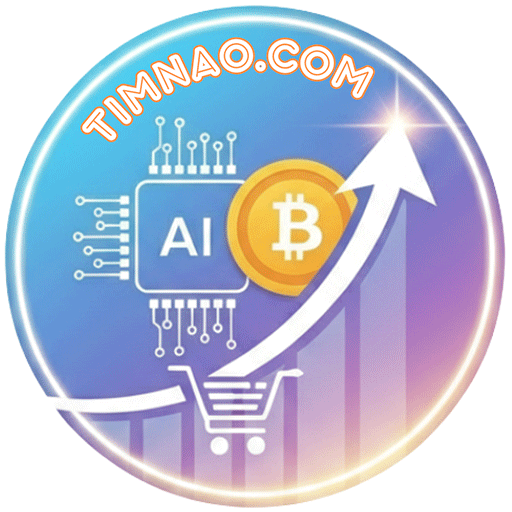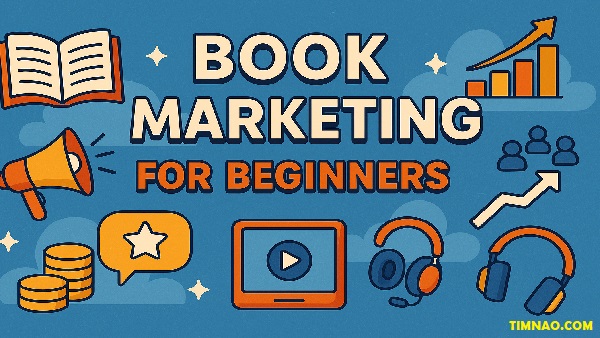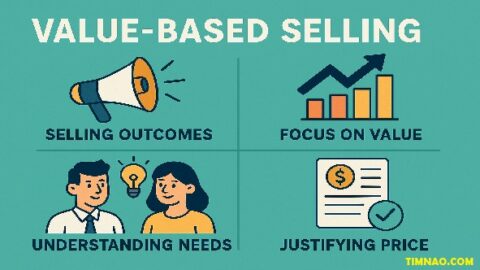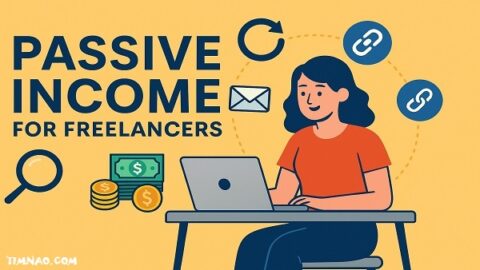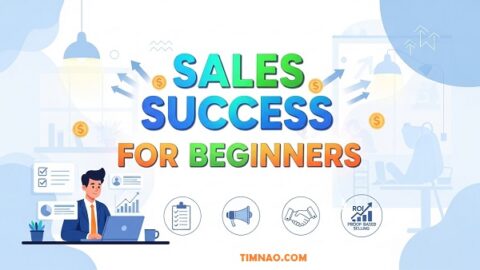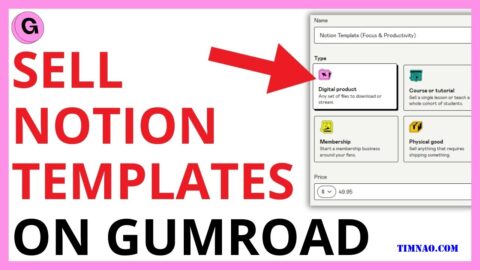Why Most Self-Published Authors Fail at Marketing (and How You Can Win) 📚🔥
Book marketing for beginners can feel like stepping into a whirlwind of confusing strategies, overwhelming platforms, and endless “must-dos.” You’ve poured your heart into writing your book—now the real challenge begins: getting people to actually read it. The truth is, publishing a book is only half the journey. The other half? Making sure it sells.
If you’re a self-published author struggling with where to start, this guide is for you. Whether your book is already live or still in the final edits, you’re about to learn clear, actionable steps to get your book into readers’ hands. From building your author brand and leveraging powerful (yet budget-friendly) advertising platforms, to harnessing the magic of free promotions, this guide simplifies everything you need to know about promoting your book like a pro.
No fluff, no jargon—just practical advice, real-world examples, and proven techniques designed to help beginners like you grow your readership and income one smart move at a time.
Let’s dive in.👇
📚Table of Contents
- 💡 What Makes Book Marketing So Hard for Beginners?
- 🧱 Start with a Strong Foundation: Your Book Must Sell Itself
- 🧲 Build Your Author Platform (Without Going Crazy)
- 🧠 Branding 101: Make Your Author Identity Stick
- ❌ Social Media: Helpful or Harmful?
- 🆓 The Power of Free: Give to Sell More
- ⭐ Social Proof: How Reviews and Awards Drive Sales
- 🔥 Use Book Samples to Hook Readers Instantly
- 🎥 Lights, Camera, Sell: How to Market Your Book with Video
- 🎧 Don’t Ignore Audiobooks—They’re a Goldmine
- 🧑💻 Advertising Demystified: Understanding CPC vs. CPM
- 🎯 BookBub Ads: A Beginner-Friendly Ad Platform
- 📈 Build Momentum: Why Continuous Advertising Wins
- 💰 Budget Smarter: How Much Should You Spend on Marketing?
- 🥇 How to Become an Amazon Bestseller Without Luck
- ❓ FAQs: Beginner Questions About Book Marketing Answered
💡 What Makes Book Marketing So Hard for Beginners?
Book marketing for beginners often feels like trying to solve a puzzle with half the pieces missing. You finally finish writing your book—something many people only dream of—and expect the hardest part to be over. But here’s the catch: publishing is just the beginning. The real challenge lies in getting your book noticed.
Many new authors mistakenly believe that uploading their book to Amazon or another platform is enough. They assume readers will somehow magically find it. Unfortunately, the reality is different. With millions of books published each year, yours is competing for attention in a crowded and noisy marketplace.
So, why is it so difficult?
- Too many options, not enough guidance. From social media to paid ads, book blogs to mailing lists, the sheer number of strategies can feel overwhelming.
- Unrealistic expectations. Many beginners think marketing success should be instant. When the sales don’t come right away, they feel discouraged.
- Lack of strategy. Without a clear plan, it’s easy to waste time, money, and effort on things that don’t move the needle.
Think of marketing as the bridge between your book and your reader. Building that bridge requires time, patience, and the right tools. But once you understand the basics and focus on strategies that work for you, it gets easier—and much more rewarding.
🧱 Start with a Strong Foundation: Your Book Must Sell Itself
Before you spend a dime on ads or promotions, there’s one crucial thing you need to know:
👉 No amount of marketing will save a poorly packaged book.
Book marketing for beginners must start with a strong foundation—and that means ensuring your product is polished, professional, and appealing from the very first glance. Your book needs to sell itself the moment someone sees it.
Here’s what that strong foundation looks like:
✅ A Professional Cover Design
People do judge books by their covers. A well-designed cover instantly signals genre, quality, and credibility. Whether you’re writing romance, sci-fi, or nonfiction, your cover must match reader expectations and stand out on digital shelves. Tools like Canva Pro or hiring a freelancer from 99designs or Fiverr can help you achieve this affordably.
✅ A Compelling Book Blurb
Think of your blurb as a mini-sales pitch. It should grab attention, stir curiosity, and clearly convey what the reader will get from your book. Avoid overly complex summaries—focus instead on emotion, benefits, and hooks.
✅ High-Quality Writing and Editing
Nothing kills word-of-mouth faster than a book riddled with typos or plot holes. Even if you’re self-editing, run your manuscript through tools like ProWritingAid or Grammarly, and consider hiring a freelance editor—even just for a proofread.
✅ Strong Metadata and Categories
Choosing the right keywords and categories on Amazon is essential for discoverability. Use tools like Publisher Rocket to find low-competition keywords and smart categories that match your audience.
✅ Solid First Impressions
Make sure the first few pages of your book are tightly written and engaging. Many readers use Amazon’s “Look Inside” feature—if the beginning drags, they’ll click away. Hook them early, and you increase your chances of a sale.
💡Beginner Tip: Before launching your book, send it to a few trusted beta readers or early fans for feedback. This early input can uncover issues you might’ve missed—and help you refine your product before going public.
By taking time to polish your book and ensure it’s market-ready, you dramatically increase the effectiveness of every future marketing effort. Remember: good marketing might get people to look—but a strong product gets them to buy.
Next up? Let’s build the platform you need to attract your ideal readers and keep them coming back.
🧲 Build Your Author Platform (Without Going Crazy)
If you’re diving into book marketing for beginners, you’ll soon come across the term “author platform.” Sounds intimidating, right? But don’t worry—it’s not about having millions of followers. It’s about building trust and visibility with the people most likely to love your books.
An author platform is simply your online presence: the combination of your website, mailing list, and any channels (blogs, podcasts, YouTube, etc.) where readers can discover you and your work. It’s your digital home base—and it’s far more valuable than chasing likes on social media.
🏠 Start With a Simple Author Website
You need a website—especially if you’re in this for the long haul. It doesn’t have to be fancy. Use platforms like WordPress, Wix, or Squarespace to get started fast.
Your website should include:
- A clean homepage with your latest or best-performing book
- A bio and author photo that feels authentic
- A newsletter signup form (more on this below)
- A “Books” page with links to your sales pages
- A contact form or email address
Remember, your website belongs to you. Unlike social platforms, no algorithm can throttle your visibility or shut it down overnight.
📬 Grow Your Email List (It’s More Powerful Than You Think)
Email marketing might sound old-school—but it’s still the most effective way to reach your readers. Your email list is your most valuable marketing asset.
Tools like MailerLite, ConvertKit, or EmailOctopus let you start free and grow over time.
Offer a reader magnet—like a free novella, deleted chapter, or behind-the-scenes content—to encourage signups. Then, nurture your list by sending valuable content, such as:
- Exclusive sneak peeks
- Updates about your next release
- Limited-time promotions
- Personal stories or lessons from your writing journey
🤝 Connect Without Burning Out
Don’t try to be everywhere. Choose one or two platforms where your ideal readers hang out—whether that’s YouTube, Goodreads, Substack, or TikTok—and focus your energy there. Show up consistently, provide value, and build relationships over time.
🧠 Branding 101: Make Your Author Identity Stick
Now let’s talk about something that’s often overlooked in book marketing for beginners—your author brand.
Even if you’ve never thought of yourself as a “brand,” you already have one. Your brand is the emotional impression you leave on readers. It’s how they describe you to friends. It’s the feeling they get when they see your name or read your content.
So why not shape that impression intentionally?
🎯 What Does Your Brand Say About You?
Your brand includes everything from your cover designs to your social media tone. If you write heartwarming romance, your imagery and voice should be soft, cozy, and uplifting. If you write gritty crime thrillers, opt for bolder, darker visuals and a more intense tone.
Ask yourself:
- What emotions do I want readers to feel when they see my books?
- What themes run through my work?
- Who is my ideal reader, and how do I want to be remembered by them?
🎨 Keep It Consistent
Your readers should instantly recognize your work—no matter where they encounter it. Use the same:
- Color palette across your website, book covers, and social media
- Fonts and logo, if you use one
- Author photo or avatar
- Voice and tone in your writing and captions
Consistency builds familiarity, and familiarity builds trust. And trust sells books.
🛠️ Tools to Help You Build Your Brand
- Color palette inspiration: Coolors
- Font pairings: Fontjoy
- Free logo creation: Looka or Canva Logo Maker
You don’t need to hire a branding agency. Just be intentional and cohesive in how you present yourself.
🧑💼 Consider Using a Pen Name (If It Makes Sense)
There are many good reasons to use a pseudonym:
- Your real name is hard to remember or spell
- You write in multiple unrelated genres
- You want privacy or a fresh start
Whatever name you choose, make sure it fits your brand tone and resonates with your audience.
🎯Beginner Tip: Look at 3–5 successful authors in your genre. Analyze how they brand themselves—from book cover style to tone of voice. What do they do well? How can you bring your own version of that into your work?
Your author brand is what sets you apart in a sea of similar books. When done well, it makes readers feel like they know you—even before they’ve read your work. That’s powerful.
Up next: Is social media really necessary for authors? Or is there a smarter way to spend your time?
❌ Social Media: Helpful or Harmful?
If you’re deep into book marketing for beginners, you’ve probably been told this: “You need to be on social media to succeed.” But let’s pause for a moment—is that really true?
Social media can be powerful… or a complete distraction. It depends on how you use it and, more importantly, if it even suits your personality and goals as a writer.
📉 The Downsides of Going All-In on Social
Here’s what most beginner authors discover the hard way:
- You’re shouting into a crowded void.
- Your posts barely reach anyone (thanks to unpredictable algorithms).
- You spend more time designing graphics than writing your next book.
- You feel pressure to “go viral” when you really just want to connect.
It’s easy to fall into the endless-scroll trap—spending hours creating content that gets buried within seconds. Unless you’re already famous or have a clear viral strategy, the return on investment is often minimal.
✅ When Social Media Does Help
That doesn’t mean social media is useless. It can be a great tool for:
- Engaging superfans through behind-the-scenes content
- Sharing book launches, deals, and promotions
- Networking with other authors or joining writing communities
- Running paid ads (especially on Facebook or Instagram)
But here’s the secret: you don’t need to do it all. Pick one platform that fits your energy and your readers’ habits. If you enjoy making short videos, try TikTok. If you prefer discussion-based interactions, try Facebook Groups or Reddit.
And if you hate social media? That’s okay too.
🧘 A Better Alternative for Beginners
Instead of pouring all your time into social media, focus on building:
- Your email list (higher engagement, better conversion)
- Your author blog (great for SEO and long-term value)
- Your presence on Amazon, Goodreads, or other book-specific platforms
The key? Choose marketing channels you enjoy and can commit to consistently.
🆓 The Power of Free: Give to Sell More
Here’s a truth most beginners don’t realize: giving something away for free can be one of the smartest ways to sell more books.
It might sound counterintuitive—why give away something you worked so hard to create? But in book marketing for beginners, the word “FREE” is magnetic. It lowers risk, builds trust, and gets people to try your work without hesitation.
🎁 Why FREE Works So Well (Psychologically)
- It feels low risk — readers can “try before they buy.”
- It triggers reciprocity — when people get something valuable for free, they often feel compelled to return the favor (by buying your next book or leaving a review).
- It builds awareness fast — especially in crowded genres.
Best of all, you only need one good freebie to get things rolling.
📚 How to Use FREE to Market Your Book
Here are powerful ways to apply the “free” strategy:
1. Free First-in-Series
If you write a series, make the first book permanently free (also called a “permafree”) on platforms like Amazon KDP, Smashwords, or Draft2Digital. This builds your readership and boosts sales of later books.
2. Short-Term Free Promotions
Run limited-time giveaways on Kindle Direct Publishing Select. Promote these giveaways using sites like:
These platforms attract deal-hungry readers actively looking for new books.
3. Free Samples or Extras
Offer sample chapters, deleted scenes, or printable worksheets (for nonfiction) as incentives to grow your email list. Pair this with a strong call to action on your website and inside your books.
4. Free Shipping (For Print)
If you sell direct through your own site, offering free shipping can boost conversion rates dramatically—even more than a discount.
🎯 What NOT to Do with Free
- Don’t rely on free forever. It’s a gateway, not your business model.
- Don’t assume “free” means low quality. Your freebie should wow readers.
- Don’t give without a strategy. Always pair your free offer with a next step—like an email signup, purchase link, or review request.
💡Beginner Tip: Add a link at the end of your free book offering readers a discount on your next title or a free bonus for joining your newsletter. This keeps the relationship going—and helps turn free readers into loyal fans.
Giving value up front builds trust and excitement—two things money can’t buy. When used wisely, free becomes one of the most powerful tools in your beginner marketing arsenal.
Next up: ⭐ Discover how reviews, testimonials, and awards can skyrocket your credibility—and your sales.
⭐ Social Proof: How Reviews and Awards Drive Sales
Here’s a powerful truth in book marketing for beginners: people trust other people. That’s why social proof—through reader reviews, testimonials, or literary awards—can make the difference between someone scrolling past your book and clicking “Buy Now.”
In a crowded market, credibility sells. And nothing boosts credibility faster than authentic praise from others.
🌟 Why Reviews Matter More Than You Think
Think of Amazon reviews as your book’s street cred. They help in two crucial ways:
- They increase conversions. A book with positive reviews signals quality and reliability. It tells potential buyers, “Others loved this—you might too.”
- They boost visibility. Amazon’s algorithm favors books with more (and better) reviews, showing them more often in searches and “also bought” carousels.
Even negative reviews serve a purpose—they show your book is real and can add to perceived authenticity.
💬 How to Get Real Reviews (Without Breaking the Rules)
For beginners, the key is to focus on organic and ethical strategies:
- Ask your readers directly. At the end of your book, include a short, friendly note: “If you enjoyed this book, please consider leaving a quick review. It helps more than you know!”
- Offer advance review copies (ARCs). Give early access to your book in exchange for honest feedback. Try platforms like BookSirens, StoryOrigin, or even reader Facebook groups.
- Start with your mailing list. Your subscribers are already engaged—ask them to review your latest release or update.
Avoid paid review services—not only do they violate platform rules, but they also undermine your trust with readers.
🏆 How Awards Boost Book Credibility
Literary awards don’t just stroke your ego—they serve as instant authority markers. A small badge on your cover or a “Winner of…” line in your description can significantly increase your conversion rate.
You don’t need to win a Pulitzer. Start with indie-friendly award programs like:
When you win—or are even shortlisted—use it everywhere: on your website, social media, Amazon description, and email footers.
💡Beginner Tip: Create a section on your website called “Praise & Awards” to highlight glowing reviews, testimonials, and accolades. It adds instant credibility and helps convert new visitors into buyers.
🔥 Use Book Samples to Hook Readers Instantly
In the world of book marketing for beginners, there’s one superpower you shouldn’t overlook: the book sample. It’s your chance to grab a reader’s attention and hold it long enough to earn a sale.
Imagine a reader browsing online. They stumble across your book. The title is intriguing, the cover is beautiful. But will they buy it? That depends on what they see when they click “Look Inside.”
🎣 Why Your First Few Pages Are Everything
You have seconds to convince someone that your story—or your insights—are worth their time. Think of your book sample as a movie trailer: it should deliver an emotional hook, spark curiosity, and leave them wanting more.
This is true whether you’re writing:
- Thrillers (hook with suspense)
- Romance (spark chemistry)
- Nonfiction (present a clear benefit or transformation)
If your intro is slow, cluttered, or off-topic, readers will bounce.
✍️ How to Create a Sample That Sells
Follow this quick checklist:
- Open with impact. Drop readers into the action, an intriguing moment, or a strong insight right away.
- Skip the fluff. Move forewords, dedications, and thank-yous to the back of your ebook if possible—get straight to the content.
- Format it cleanly. Make sure it looks great on mobile, e-readers, and tablets. Use large enough fonts, good spacing, and no strange line breaks.
- End on a cliffhanger or revelation. Give readers a reason to keep going—and to purchase the full version.
📤 Where to Share Your Sample
Don’t just rely on Amazon’s “Look Inside.” Proactively share your sample:
- Offer a downloadable preview on your website
- Send it in your welcome email for new subscribers
- Post the first chapter as a blog teaser or Medium article
- Use it as a free opt-in gift for email list growth
You can even record yourself reading it aloud and post that as a teaser video on YouTube, TikTok, or your author blog.
🎯Beginner Tip: Treat your sample like your best marketing asset. Test different opening pages with readers or critique groups to see which version creates the most curiosity.
When readers get a taste of your writing and can’t stop reading, your conversion rate skyrockets. Don’t waste that golden opportunity—craft a sample that makes clicking “Buy Now” a no-brainer.
Coming up next: 🎥 Learn how to use video to make your books stand out in a scroll-happy world and 📢 why audio content is your next big opportunity.
🎥 Lights, Camera, Sell: How to Market Your Book with Video
In today’s digital age, readers aren’t just searching for great books—they’re looking for connections with authors. That’s where video marketing shines. For book marketing for beginners, video might seem intimidating, but it’s actually one of the most personal, high-impact tools you can use.
Why? Because video builds trust. It turns your book from a cover on a screen into an experience—and you, the author, into a relatable human being.
🎬 What Kinds of Videos Should You Create?
You don’t need a film crew or fancy equipment. Start with your smartphone and free editing tools like CapCut or InShot. Focus on storytelling and authenticity.
Here are beginner-friendly video ideas that work:
- Book Trailers: A short cinematic teaser highlighting the mood, genre, and plot of your book.
- Author Q&As: Answer reader questions about your writing process or inspiration.
- Behind-the-Scenes: Share your writing space, outline process, or research moments.
- Chapter Readings: Read a gripping section of your book to give potential readers a taste.
- New Release Announcements: Create hype around a launch or pre-order.
📱 Where to Share Your Videos
Choose platforms that match your energy and your audience:
- YouTube: Great for longer, evergreen content.
- TikTok & Instagram Reels: Ideal for short-form book teasers and personal updates.
- Facebook: Works well for live readings, launch announcements, or group interactions.
- Your Website: Embed videos in your blog posts or on your homepage to build engagement.
🔥 Pro Tips for First-Time Book Video Creators
- Keep it short: 30–90 seconds is plenty.
- Start with a hook: Grab attention in the first 3 seconds.
- Always end with a call-to-action (e.g., “Grab your copy now!” or “Join my newsletter for more”).
💡Beginner Tip: Nervous about being on camera? Use slides, stock footage, or animated graphics instead. Tools like Canva Video or Animoto make this super easy.
🎧 Don’t Ignore Audiobooks—They’re a Goldmine
Audiobooks are no longer a niche—they’re one of the fastest-growing formats in publishing. In fact, audiobook revenue in the U.S. surpassed $2 billion in 2023, and it’s still climbing.
For book marketing for beginners, tapping into the audiobook world is a smart move—especially if you’re looking to diversify income and reach time-strapped readers who prefer to listen while driving, walking, or exercising.
🎙️ Why Audiobooks Expand Your Reach
- More accessibility: Audiobooks appeal to people who don’t (or can’t) read traditionally.
- Less competition: Fewer indie authors publish audiobooks compared to ebooks.
- Loyal listeners: Audiobook fans often binge an author’s entire library once hooked.
🎧 How to Get Started with Audiobooks
You don’t need to narrate your book yourself (unless you want to). Instead:
- Choose a distribution platform:
- ACX: The most popular option to publish on Audible, Amazon, and iTunes.
- Findaway Voices: Offers wide distribution and more flexibility.
- Google Play Books: A growing platform with direct audiobook support.
- Hire a narrator (optional):
- Browse voice actors on Voices.com, Fiverr, or directly through ACX.
- Choose someone whose tone matches your genre and story.
- Record and upload:
- Make sure your audio files are professionally edited and meet platform specs.
- Add your cover art and metadata—then you’re ready to publish.
📢 How to Market Your Audiobook
Don’t just list it and forget it. Market your audiobook like a pro:
- Upload short audio clips to SoundCloud or your website as previews.
- Use “audiogram” tools like Headliner to create animated soundbites for social media.
- Include audiobook links in your newsletters, blogs, and bios.
- Run promotions on ChirpBooks, a discount site just for audiobooks.
🎯Beginner Tip: Ask readers to request your audiobook at their local library—it costs them nothing and increases your exposure and income through library licensing.
Audiobooks are more than just a format—they’re a powerful marketing and revenue stream that many beginners overlook. Now’s the time to make your story heard—literally.
Up next: 💰 Dive into advertising essentials—learn how CPC and CPM bidding works and how to run your first effective ad campaign without wasting money.
🧑💻 Advertising Demystified: Understanding CPC vs. CPM
If you’re exploring book marketing for beginners, you’ve likely come across terms like CPC and CPM when setting up ads on platforms like Amazon, Facebook, or BookBub. These acronyms sound technical, but don’t worry—they’re simple once you break them down.
Let’s demystify these two essential ad models so you can make smarter marketing decisions from day one.
🆚 CPC vs. CPM: What’s the Difference?
| Term | What It Stands For | What You’re Paying For |
|---|---|---|
| CPC | Cost Per Click | You only pay when someone clicks your ad |
| CPM | Cost Per Mille (thousand) | You pay for every 1,000 impressions (views), regardless of clicks |
💡Which One Should Beginners Use?
For most self-published authors just starting out, CPC is the better option.
Why?
- You only pay for engagement, not just visibility.
- It’s easier to track your ROI (Return on Investment).
- You can test different ads without blowing your entire budget.
Use CPM when your goal is maximum visibility, like boosting awareness for a new release or rebranding campaign. But for direct sales-focused campaigns, CPC gives you more control and efficiency.
📊 When and How to Test Ad Models
If you have a small budget (under $100), start with CPC and test different combinations of:
- Ad creatives (images, headlines)
- Target audiences (genre fans, keywords, similar authors)
- Platforms (Amazon, BookBub, Meta)
Once you get solid click-through rates (CTR), you can experiment with CPM ads to boost exposure for broader campaigns.
🎯Beginner Tip: A healthy click-through rate (CTR) for CPC ads is 0.5% to 1.5%. If you’re below that, tweak your ad image or headline to grab more attention.
🎯 BookBub Ads: A Beginner-Friendly Ad Platform
For new authors, BookBub is one of the most beginner-friendly and effective ad platforms available today. It’s trusted by bestselling indie and traditional authors alike, and it’s built specifically for books and readers.
Unlike other ad platforms, BookBub doesn’t mix your book promotion with distractions like cat videos or cooking reels—it puts your book in front of actual book buyers.
📣 Why BookBub Is Ideal for Self-Published Authors
- Targeted by genre and author: Reach readers who love the exact kind of books you write.
- Email-based exposure: Ads appear inside daily emails sent to millions of readers worldwide.
- No approval bottlenecks: You can advertise any book, any time—no “feature deal” gatekeepers.
- Budget flexibility: Start with as little as $1/day.
🛠️ How to Set Up Your First BookBub Ad (Step-by-Step)
1. Create a BookBub Partners account
Go to partners.bookbub.com and sign up.
2. Design your ad image
Use Canva or Fotor to create a clean, genre-specific 350×250 pixel ad. Or use BookBub’s built-in design tool.
3. Choose your campaign type and targeting
You’ll be prompted to choose:
- Format (eBook, audiobook, etc.)
- Target audience (by genre or fans of similar authors)
- Placement links (Amazon, Apple, Kobo, etc.)
4. Set your ad budget and bidding model
Choose either:
- CPC (Cost Per Click) — ideal for testing performance
- CPM (Cost Per 1,000 Impressions) — better for visibility campaigns
Start with a $5–$10 daily budget to safely test different creatives and targets.
5. Launch and monitor
Track performance from your dashboard. Look at metrics like:
- Click-through rate (CTR)
- Cost-per-click (CPC)
- Conversion (sales, downloads, or email signups)
Pause or duplicate campaigns based on what’s working.
💡Beginner Tip: Target 1–3 similar authors whose readers would also enjoy your book. This tight focus tends to outperform broad genre targeting.
🧪 The Power of Testing on BookBub
Don’t stop at one ad. Test different:
- Headlines
- Images
- Price points
- Target author combinations
Then double down on what performs best. BookBub’s platform rewards repetition and fine-tuning—and the more consistently you advertise, the better your results will be over time.
📈 Build Momentum: Why Continuous Advertising Wins
When most beginner authors think about marketing, they treat it like a one-off event: a launch-day blast, a two-day promo, or a single email to their list. But here’s the truth—book marketing for beginners isn’t about a few big pushes. It’s about steady, consistent visibility.
This is where continuous advertising comes in.
🔄 Why One-and-Done Ads Fail
Short-term ad bursts might give you a temporary spike in sales—but without ongoing exposure, your book quickly vanishes from readers’ minds and search rankings. This leads to the dreaded “rollercoaster” sales pattern.
Instead, continuous advertising helps you:
- Stay visible in front of new readers every day
- Feed Amazon’s algorithm to improve organic ranking
- Build brand familiarity, which increases conversions over time
🧩 How to Set Up an Always-On Strategy (Without Burning Out)
The secret isn’t spending more—it’s spending smarter over time.
Here’s how to build an evergreen ad loop:
- Run low-budget daily ads ($2–$10/day) on BookBub or Amazon
- Rotate ad creatives and audiences every 2–4 weeks to avoid ad fatigue
- Monitor performance weekly, and scale only what’s working
- Track long-term trends, not just daily clicks
By doing this, you keep your book in front of readers constantly—without overloading your wallet or your mental bandwidth.
💡Beginner Tip: Set aside 10 minutes each Monday to review your ad dashboards. Pause underperformers, duplicate winners, and always be testing something small.
🔁 Rethink the Way You Launch
Instead of doing one big launch and then disappearing, consider planning micro-campaigns throughout the year:
- Launch → Promote → Cooldown → Relaunch with a new cover, category, or edition
- Pair promotions with holidays or reader events (e.g., National Book Month)
This builds momentum and keeps your book alive long after the “new release” buzz fades.
💰 Budget Smarter: How Much Should You Spend on Marketing?
Here’s a question almost every new author asks:
“How much should I spend on book marketing?”
Unfortunately, there’s no one-size-fits-all answer—but there is a smarter way to plan your budget, especially if you’re new to the publishing game.
📊 A Realistic Breakdown for Beginners
If you’re doing book marketing for beginners on a tight budget, here’s a suggested range:
| Genre | Suggested Budget Range |
|---|---|
| Nonfiction | $500–$2,000 |
| Romance | $400–$1,000 |
| Mystery/Thriller | $500–$1,200 |
| Fantasy/Sci-Fi | $600–$1,500 |
| Children’s Books | $300–$800 |
| Self-Help | $700–$2,500 |
Note: You don’t have to spend this all at once. Spread it across 3–6 months to allow for testing and refinement.
📌 Where Should the Money Go?
Break your marketing budget into three key buckets:
- Advertising (50%)
- CPC ads (BookBub, Amazon, Facebook)
- Boosting posts or newsletters
- Production & Tools (30%)
- Cover design, formatting, editing
- Email marketing software, ad tools (like Publisher Rocket)
- Promotions & Platforms (20%)
- Paid promo sites like Freebooksy, Bargain Booksy, or BookFunnel
- ARC distribution tools like StoryOrigin
🎯Beginner Tip: Track every marketing dollar you spend and match it against your royalties. You don’t need to profit immediately—but you do want to see growth and learning with every campaign.
🚀 Scaling Your Marketing With Confidence
Once you start earning consistent sales, reinvest a portion of your royalties—this is the best way to scale sustainably.
Here’s a simple reinvestment formula:
Reinvest 30–50% of your monthly royalties into ads or promotions.
This allows you to build momentum without dipping too deeply into your savings.
🥇 How to Become an Amazon Bestseller Without Luck
Becoming an Amazon bestseller may sound like something reserved for publishing giants or authors with massive fanbases. But here’s the truth most beginners don’t realize: with the right strategy, you can achieve it—even with your first book.
It’s not about luck. It’s about positioning, timing, and targeted promotion.
🧭 Understand Amazon’s Bestseller System
Amazon’s Best Seller badge is awarded to the #1 book in a specific category—not the entire store. That means:
- You don’t need to outsell Stephen King.
- You do need to outperform others in a narrow, strategic category.
The rankings update hourly, and momentum matters. Even a small surge in sales (e.g., 20–50 sales in a day) can push you to #1 in a niche category.
🗂️ Choose the Right Categories
This is one of the most important tactics in book marketing for beginners. Choosing smart categories can dramatically increase your chances of earning that orange badge.
Here’s how:
- Use tools like Publisher Rocket to research categories with:
- High relevance to your book
- Lower competition (fewer daily sales needed to reach #1)
- On Amazon KDP, request up to 10 categories by emailing support—even though the dashboard only lets you pick two.
- Target sub-sub-categories (e.g., “Teen & Young Adult Paranormal & Urban Fantasy” instead of just “Fantasy”).
💥 Run a Launch or Promo Campaign
Once you’ve chosen your categories:
- Schedule a 1–3 day promotion to boost sales volume fast
- Use promo sites like Book Cave, BookSends, or ENT
- Email your list, go live on social media, and ask friends/fans to share
- Keep your pricing low ($0.99 or free) during the campaign to boost downloads
A well-timed, well-targeted promotion can get you that coveted badge within 24–48 hours.
🎯Beginner Tip: The Amazon Bestseller badge lasts even after your ranking drops. You can screenshot it, mention it in your bio, and add it to your cover or social proof for future marketing.
📈 What Happens After You Hit #1?
Leverage it.
- Add “Amazon Bestselling Author” to your bio, website, and media kit
- Mention it in outreach to blogs or podcasts
- Use it as a hook for your next launch (“From the bestselling author of…”)
Badges boost credibility—and credibility sells more books.
❓ FAQs: Beginner Questions About Book Marketing Answered
Let’s wrap things up by tackling some of the most common questions authors ask when first stepping into book marketing for beginners. These quick answers will help you avoid costly mistakes and start on solid footing.
📚 Do I need to have more than one book to start marketing?
No. While having a series helps with long-term sales, you can successfully market a single book—especially if you pair it with free content, email capture, and smart ads.
💸 How much should I spend per month on ads?
Start small. Even $50/month can go a long way if you test wisely. Focus on one platform, like BookBub or Amazon, and scale slowly as you gain confidence.
🌐 Do I really need a website?
Yes. A basic website builds trust, captures email signups, and helps you control your author brand. It doesn’t need to be fancy—just clear and professional.
🖼️ What’s the most important part of my marketing material?
Your book cover. It’s the first thing readers see. If your cover doesn’t match your genre expectations, no amount of marketing will help. Hire a professional if you can.
💥 Should I give my book away for free?
Absolutely—strategically. Use free offers to build your list, get reviews, or boost visibility for a series. Just make sure your freebie is high-quality and part of a bigger strategy.
🧠 How long does it take to see results?
Think in months, not days. Some campaigns work fast (like a 99¢ promo), but building an audience and gaining traction takes consistency. Commit for the long haul.
🧰 What tools are beginner-friendly and worth the investment?
- BookFunnel — for delivering freebies and ARCs
- MailerLite — easy, free email marketing
- Publisher Rocket — category and keyword research
- Canva — easy visuals and promo graphics
- BookBub Ads — focused ads for readers
🧭 Where to Go From Here?
If you’ve made it this far, you already know more than 90% of first-time authors.
Now it’s time to take action—start small, test everything, stay consistent, and remember that every bestselling author started with zero readers, just like you.
You don’t need to be perfect. You just need to begin.
